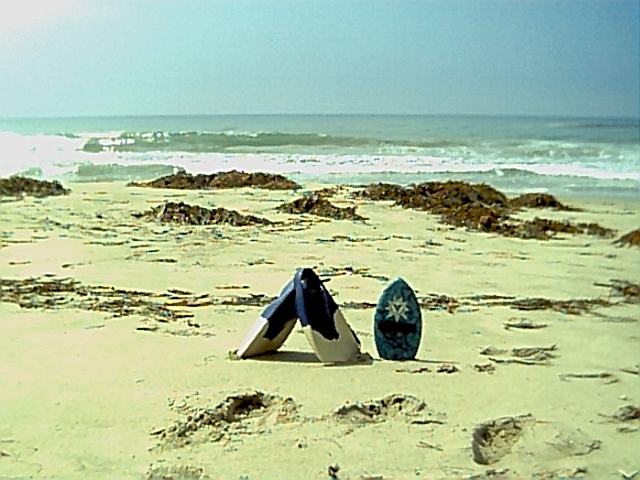| vagabondsurf.com It's about life - not "lifestyle" |
| HOW TO START BODYSURFING |
 |
| Something Melinda Morey wrote got me to thinking that a "How-To" article on bodysurfing might be a good idea. She had rightly pointed out that since the advent and radical dispersal of bodyboards, that has become the primary introduction to waveriding for most people. Before that it was bodysurfing. The result of this is that virtually any surfer over age 40 is at least familar with bodysurfing, and to those younger than that bodysurfing ranges from being somewhat mysterious to absolutely arcane. This is sad for many reasons, the first and foremost being that bodysurfing is a lot of fun. It is also the least expensive form of serious waveriding to equip yourself for, with the most durable equipment (if used with common sense). Bodysurfing allows the most efficiently transported equipment form of surfing, and it is the easiest form to maintain proficiency at (just keep swimming and you maintain required fitness). The requirements: 1. You need to know how to swim! the better and stronger you swim, the more you will enjoy bodysurfing. 2. You need surf quality swim fins (more on this later). 3. You need to cover yourself. If the water is warm enough (over 64 degrees for me), wear good surf trunks or Speedos. Under 64 degrees and you need to think about wetsuits. There are a huge variety of wetsuit manufacturers, designs, and materials - something is suited for literally any envrionment.Unlike board surfing or bodyboarding, you won't have a floatation device - you are immersed in the ocean. People swear they can get modern fullsuits which allow bodysurfing in 50 degree water without ever getting the inside of the suit wet. Fit is a key element, however, so you need to physically try on several brands and models. 4. You need some basic wave knowledge. If you already surf or bodyboard you should already have this. If not, utilize the materials available to beginning surfers. All the "rules of the road" are the same as for as surf breaks, oceanography, and wave-etiquette. |
| Copyright (C) 2002. All rights reserved. ***** |
| The link was fixed 8/23 |